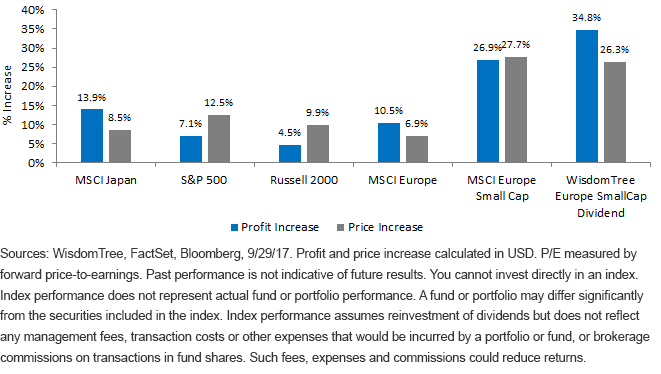
For investors trying to anticipate the next big inflection point for European equities amid a year of strong gains and moderate volatility, what should they be looking for from one of the best developed market equity trades of the year thus far in European small caps?
Year-to-date, Europe has largely paid off as a contrarian trade as a result of the
Market Multiples Falling on Strong Earnings Gains
A typical concern for investors is buying yesterday’s trade after share prices have run up and valuations have been stretched. When reviewing European small-cap valuations, surprisingly, this asset class is even less expensive today than at the beginning of the year when measured by price-to-earnings (P/E) ratios.
In decomposing the P/E ratio, the metric is agnostic to the currency impact as the numerator and denominator are denominated in the same currency. What has led to multiple contraction for European small caps has been improving earnings, as well as improving earnings growth expectations.
In comparing the multiple contraction in European small caps to U.S. small caps, as shown by the Russell 2000 Index, it is apparent that U.S. valuations have hardly changed since the beginning of the year despite lackluster returns. While U.S. small caps may surprise to the upside this fall if Washington delivers on corporate tax reform, from a valuation perspective, Europe offers an attractive discount when comparing the WisdomTree Europe SmallCap Dividend Index to the Russell 2000 Index. The valuation discount is particularly notable despite the WisdomTree Index’s price increase outpacing that of the Russell Index by more than 15 percentage points.

Price and Profit Growth

Small Caps Tapping into Cyclical Growth
















